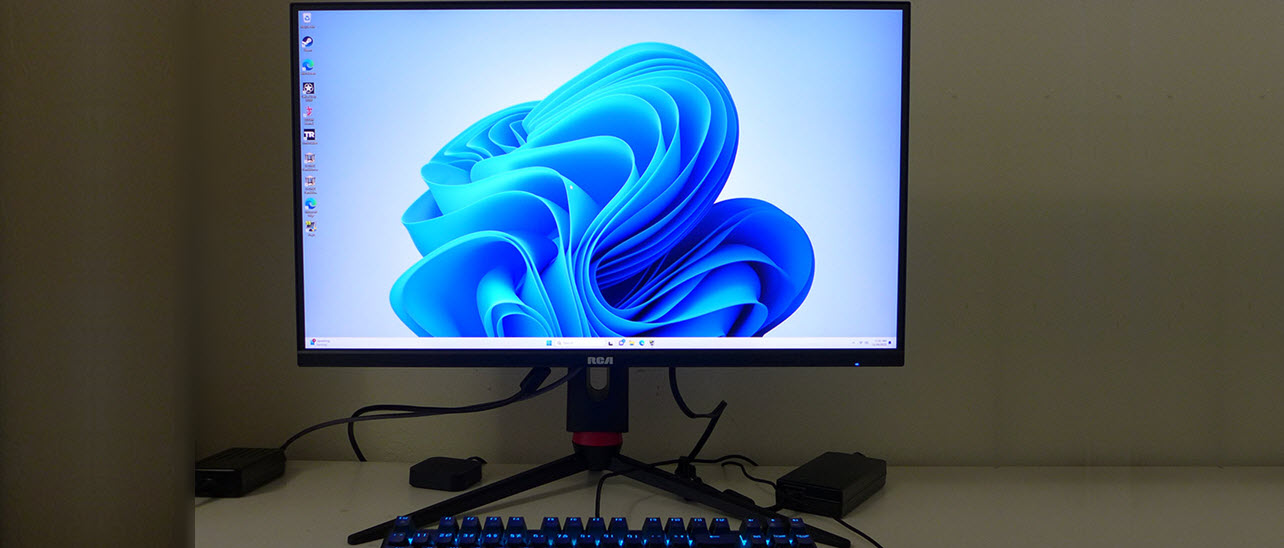Why you can trust Tom's Hardware
Our HDR benchmarking uses Portrait Displays’ Calman software. To learn about our HDR testing, see our breakdown of how we test PC monitors.
The M27PG135F supports HDR10 signals and will switch modes automatically once you set the OSD option to Auto. There is no dynamic dimming, so contrast is about the same as SDR. But color accuracy is quite good, so HDR content has a little more impact.
HDR Brightness and Contrast
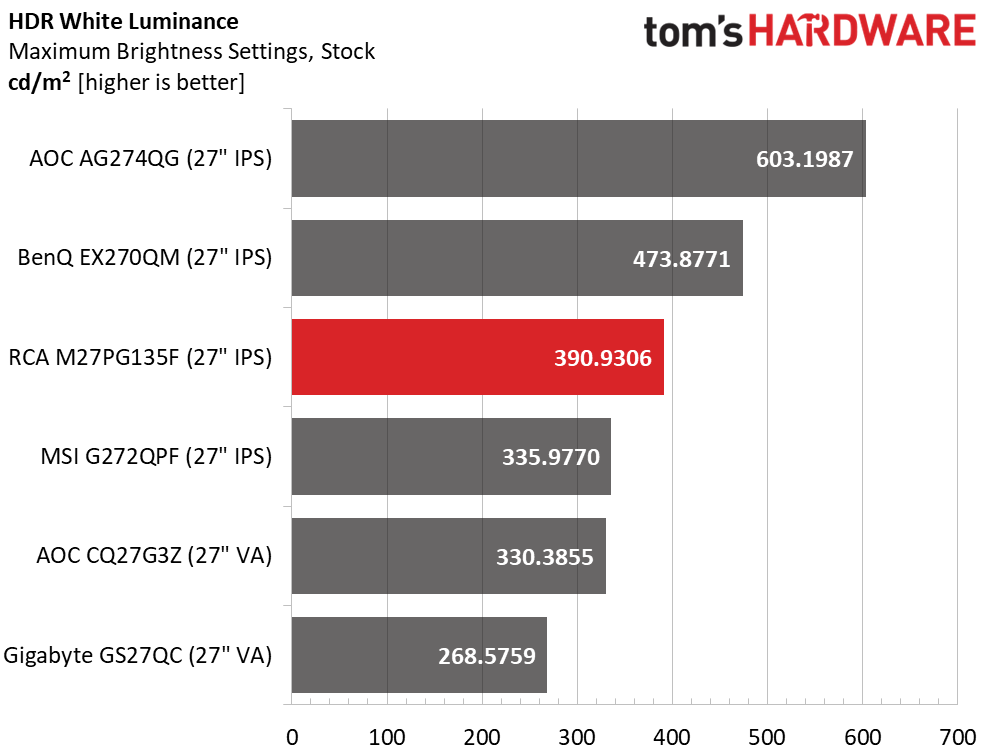
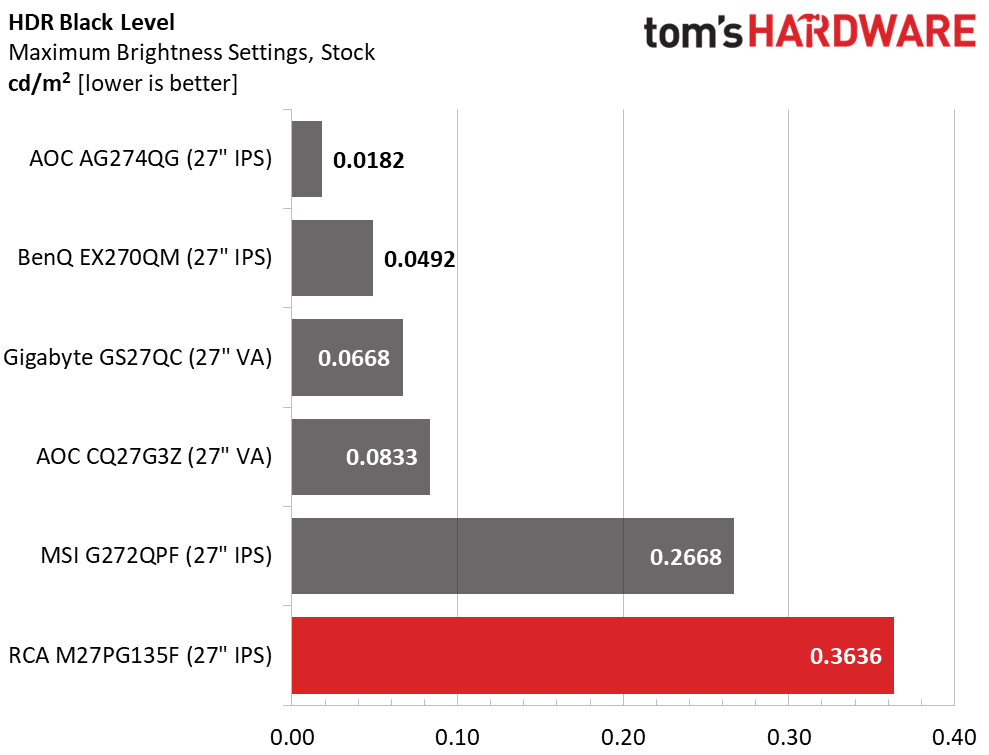
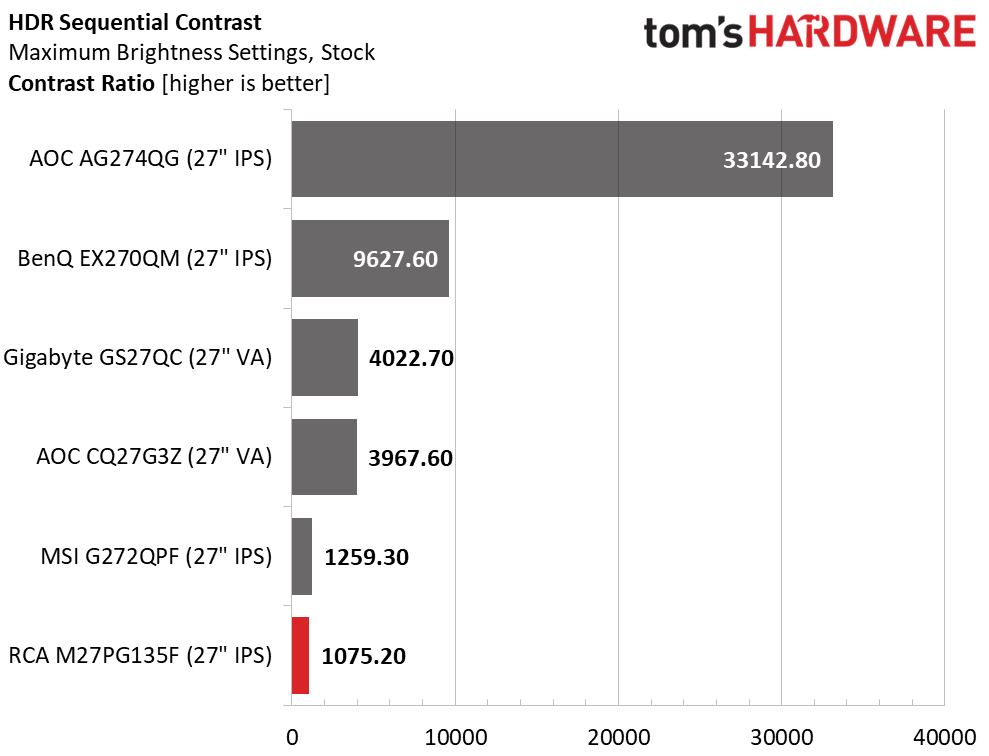
The M27PG135F is a tad brighter in HDR mode with 390 nits of peak output. Black levels rank last in this comparison as does contrast, which is about the same as SDR at 1,075.2:1. Given the color results I’m about to show you, this is unfortunate because with dimming, HDR would be significantly better.
Grayscale, EOTF and Color
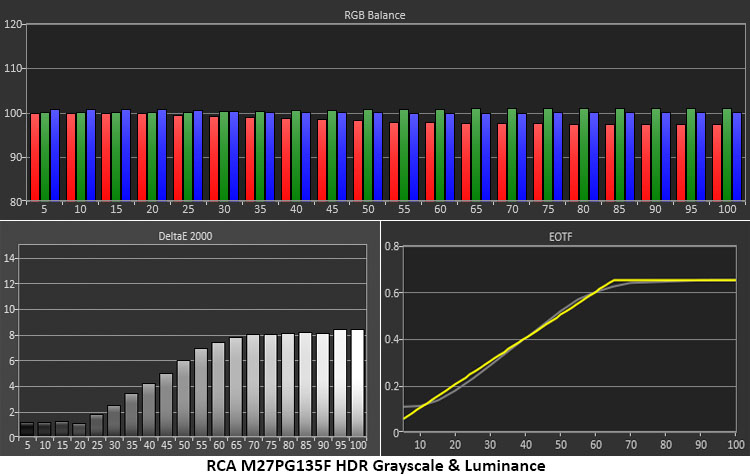
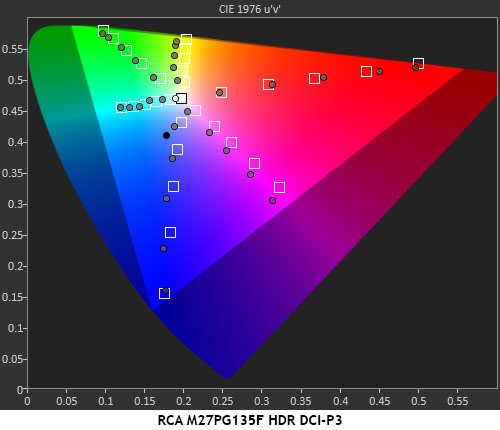
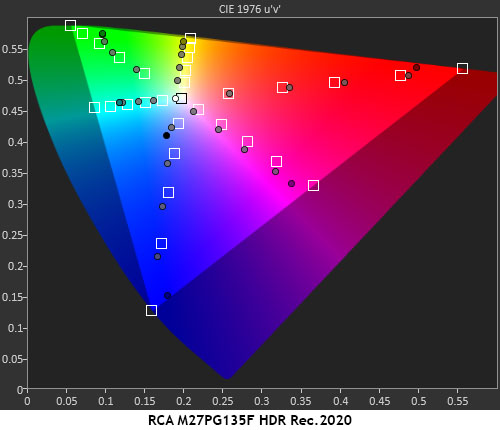
The M27PG135F’s HDR grayscale tracking is a little cool in tone once you get past 40% brightness. This is typical performance for the category. The EOTF trace is nearly perfect except for the zero and 5% steps, which are too light. This makes shadow detail very visible but also robs the M27PG135F of a true black. This is where a dynamic dimming option would make an impact. The tone-map transition is at 65%, which is correct for the measured black and white levels.
The M27PG135F nails its HDR color tests with nearly full and accurate coverage of DCI-P3. Only magenta is slightly off-hue, but that error is hard to spot in actual content. Blue has a bit of extra vibrance and green is lush and rich. Most wide-gamut screens come up short in the green primary but not the RCA. It also does an excellent job in the Rec.2020 test, with all points on target until color runs out. This is the way it should be since most content lives in the 20-60% saturation range.
Test Takeaway: It’s a bummer that the M27PG135F doesn’t have dynamic contrast because its HDR color and luminance tracking is very close to the mark. It has a little more impact than SDR, thanks to that wide gamut. When compared to other monitors at this price point, it is more colorful, but its image is less deep due to those higher black levels.
MORE: Best Gaming Monitors
Get Tom's Hardware's best news and in-depth reviews, straight to your inbox.
MORE: How We Test PC Monitors
MORE: How to Buy a PC Monitor
MORE: How to Choose the Best HDR Monitor

Christian Eberle is a Contributing Editor for Tom's Hardware US. He's a veteran reviewer of A/V equipment, specializing in monitors. Christian began his obsession with tech when he built his first PC in 1991, a 286 running DOS 3.0 at a blazing 12MHz. In 2006, he undertook training from the Imaging Science Foundation in video calibration and testing and thus started a passion for precise imaging that persists to this day. He is also a professional musician with a degree from the New England Conservatory as a classical bassoonist which he used to good effect as a performer with the West Point Army Band from 1987 to 2013. He enjoys watching movies and listening to high-end audio in his custom-built home theater and can be seen riding trails near his home on a race-ready ICE VTX recumbent trike. Christian enjoys the endless summer in Florida where he lives with his wife and Chihuahua and plays with orchestras around the state.
